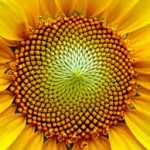
“Lost time is never found again.” – Ben Franklin
When working with students in elementary school, I like to talk about sequences or number patterns. I often present them with the start of a sequence, say the first three numbers. I then ask the class to give me the next term (or number) in the sequence. Letting everyone in the class mull it over for a bit, I ask for the pattern (the code essentially) and the next few numbers. When I first did this, I was amazed! I had a sequence in mind, but the students kept giving different, yet very viable sequences. Not only that, they could justify their answers by supplying the “code” for the sequence. I quickly realized that with just three numbers at the start of a sequence, the possibilities were plentiful. It was quite the challenge for the students also.
So, I started doing this as a “break the ice” activity with classrooms. We would use the same three numbers again and again, and see how many different (yet viable) sequences could be made. When they give me a sequence and its corresponding justification, I would say “great, let’s find another” and erase it leaving only the first three “seed numbers” that I had originally written. I would then ask them to give me another different sequence and the whole thing would start over again. Each time I do this, I am still amazed at how many different sequences they come up with and how challenging they find it. Here’s the start of a sequence for you to try …
Here’s three numbers that start a sequence: 2, 3, 5, . . .
What do you think the next number can be? How about the number after that? Remember, it has to follow a pattern, so you can easily find each successive number by applying the pattern.
I’ve given this pattern to numerous classrooms. Each time, they came up with a variety of different answers, all of which make a valid sequence. For the next number, classes have given 7, some have given 8 while others have given 14. In all, from all of the classes, I have received 9 different sequences that these three numbers can generate (and there’s even more!).
My challenge to you is to find as many different sequences that can be generated using the first three numbers 2, 3, 5. Remember don’t just come up with the sequence, but identify the pattern that it follows. Challenge yourself to see if you can find nine different sequences. Good luck, have fun and challenge others, the more the merrier!

